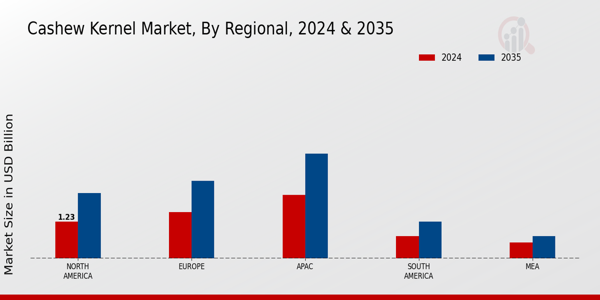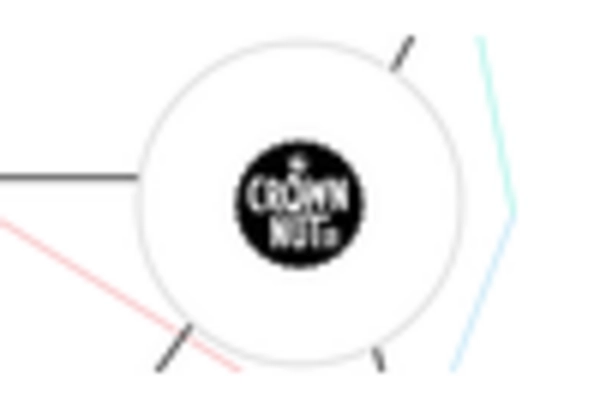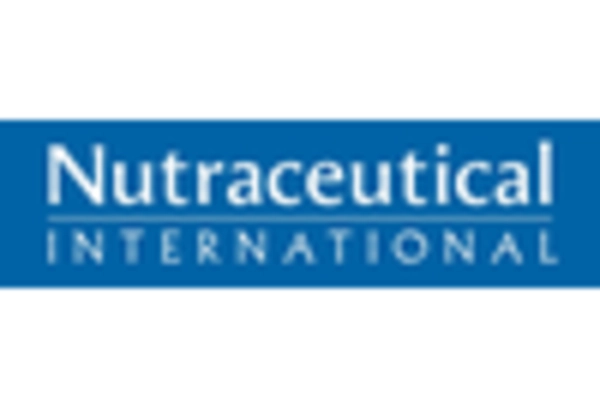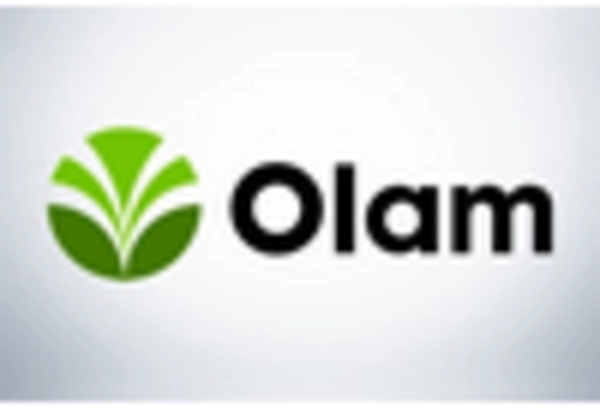Rising Health Awareness
The increasing awareness regarding health and nutrition is a pivotal driver for the Cashew Kernel Market. Consumers are progressively seeking healthier snack alternatives, and cashew kernels, rich in essential nutrients, are gaining traction. The market data indicates that the demand for nuts, including cashews, has surged, with a notable increase in sales attributed to their perceived health benefits. Cashew kernels are recognized for their high levels of monounsaturated fats, protein, and minerals, which align with the growing trend of health-conscious eating. This shift in consumer behavior is likely to propel the Cashew Kernel Market forward, as more individuals incorporate these nuts into their diets for their nutritional advantages.
Sustainability Initiatives
Sustainability is becoming a crucial factor in the Cashew Kernel Market. Consumers are increasingly concerned about the environmental impact of their food choices, prompting manufacturers to adopt sustainable sourcing practices. This shift is reflected in the growing demand for ethically sourced cashew kernels, which are produced with minimal environmental impact. Market data shows that brands emphasizing sustainability are gaining a competitive edge, as consumers are willing to pay a premium for products that align with their values. Consequently, the Cashew Kernel Market is likely to benefit from this trend, as sustainability initiatives not only enhance brand loyalty but also attract a conscientious consumer base.
Innovations in Product Offerings
Innovative product development is significantly influencing the Cashew Kernel Market. Manufacturers are diversifying their offerings by introducing flavored and value-added cashew products, such as cashew butter and cashew milk. This trend appears to cater to the evolving preferences of consumers who are looking for unique and convenient snack options. Market data suggests that the introduction of these innovative products has led to an increase in market share for cashew kernels, as they appeal to a broader audience. Furthermore, the rise of plant-based diets has created opportunities for cashew-based products, enhancing their appeal in the health and wellness sector. As a result, the Cashew Kernel Market is likely to experience sustained growth driven by these innovations.
Expansion of Distribution Channels
The expansion of distribution channels is a significant driver for the Cashew Kernel Market. The rise of e-commerce platforms has transformed the way consumers access cashew products, making them more readily available. This trend is particularly relevant as online shopping continues to gain popularity, allowing consumers to purchase cashew kernels from the comfort of their homes. Market data indicates that online sales of nuts, including cashews, have increased substantially, reflecting changing consumer preferences. Additionally, traditional retail channels are also adapting by offering a wider variety of cashew products. This multifaceted approach to distribution is likely to enhance the visibility and accessibility of cashew kernels, thereby driving growth in the Cashew Kernel Market.
Growing Demand in Emerging Markets
Emerging markets are becoming increasingly important for the Cashew Kernel Market. Countries in Asia and Africa are witnessing a rise in disposable incomes, leading to a shift in dietary habits towards more protein-rich foods, including nuts. Market data indicates that the consumption of cashew kernels in these regions is on the rise, driven by urbanization and changing lifestyles. As consumers in these markets become more aware of the health benefits associated with cashew consumption, the demand is expected to grow. This trend suggests that the Cashew Kernel Market may see significant expansion opportunities in these emerging economies, as they represent a new frontier for growth.


















Leave a Comment